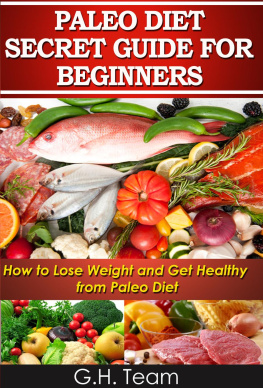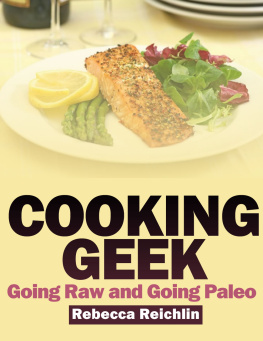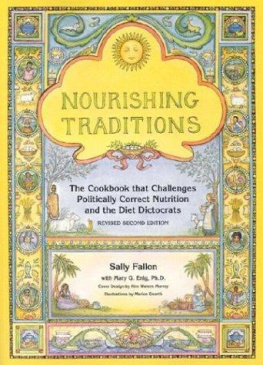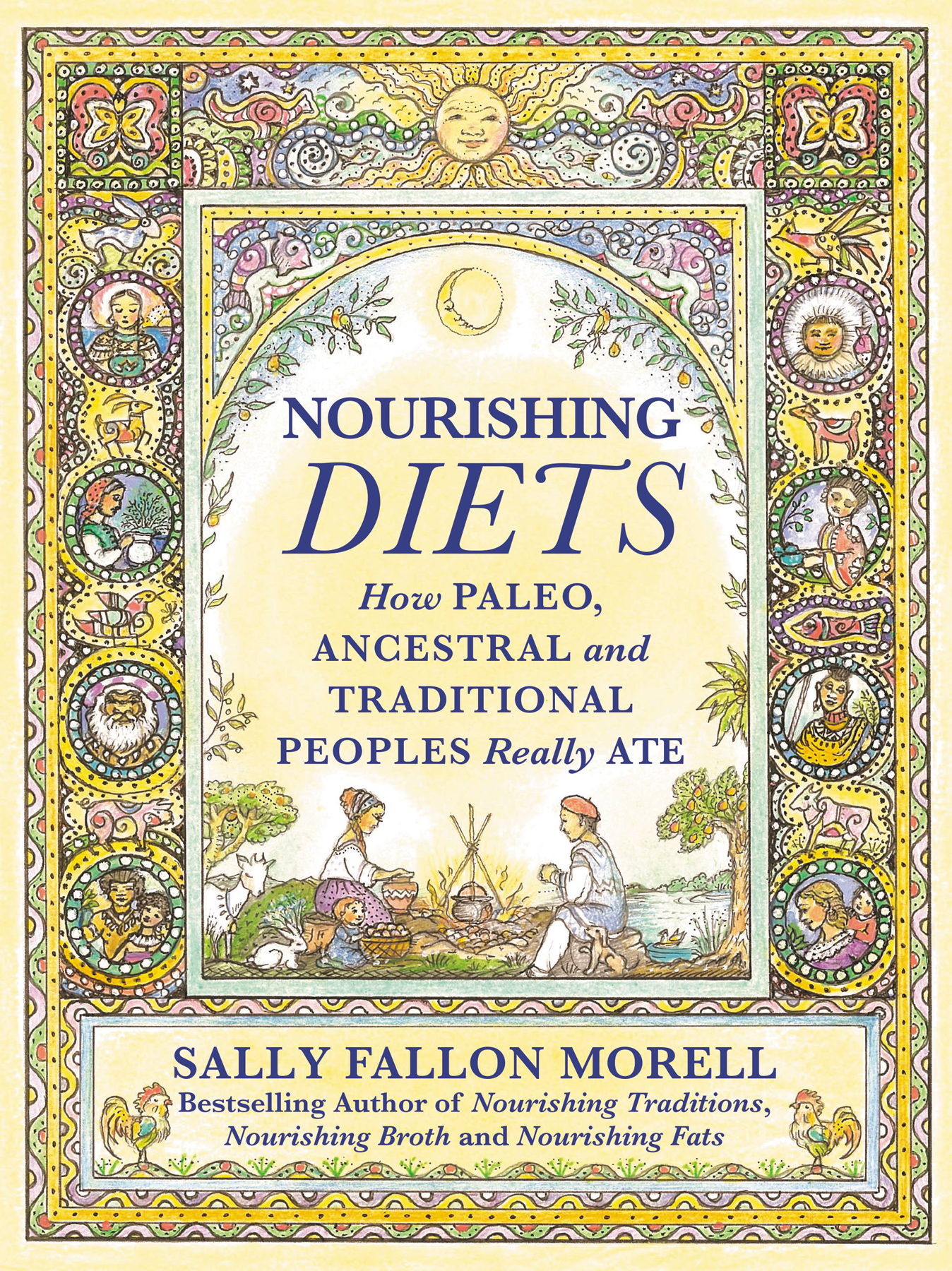I first met Sally about twenty years ago through an article I read in a small magazine called Spectrum. By that time, I had been a practicing holistic and anthroposophical doctor for about fifteen years and had studied food and medicine for over two decades. I thought I knew a lot about food and the relationship between food and health. That small article quickly convinced me that no matter how much I thought I knew, this woman knew far more than I did. I resisted my first urge to go off and pout and decided to call her to talk about food, medicine and how she had learned about these subjects. That call led to Sally doing her first public Nourishing Traditions workshop in my small town in New Hampshire; it led me to become one of the founding board members of the Weston A. Price Foundation; it led to two books that we cowrote; and most importantly it led to a lifelong friendship.
After two decades of collaboration, I was honored to be asked to write this small preface to Sallys new book Nourishing Diets. I was surprised that I had two distinct reactions to reading her new book. The first was expected; the second surprised me.
The first reaction was that, in contrast to the inaccurate nonsense that is out there among bestselling books purporting to describe the dietary habits of healthy traditional people, Sally gives an in-depth and accurate depiction of what healthy diets actually were like. We have been led to believe that healthy Okinawans or Native Americans lived on low-fat animal foods, tree nuts and wild greens. The reality, as Sally describes in intimate detail, is that the healthy diets of the most successful humans on the planet were loaded with high-fat animal foods including insects and offal, as well as lots of fermented foods and drinks of all sorts. Traditional people eat many foods and parts of animals that most of us have never heard of, let alone eaten. Sallys depth of knowledge about what constitutes a real traditional diet surpasses by miles anything found in the popular books on this subject, including the usual paleo diet prescriptions.
Contrary to what we have been told, healthy traditional cultures, far from excluding this or that category of foods (like grains, dairy, beans, fats and organ meats), relished these foods, perhaps above all others. But they were meticulous about their preparation techniques to make foods healthy and palatable, many of which are now validated by modern science.
I often tell my patients the single most important health decision they have to make is to decide whether they think modern Americans are the healthiest people who have ever lived. This is what we are told, over and over againwe should all be grateful for the modern agricultural system, the wonders of the green revolution, the blessings of modern medicine, and the convenience of food fortification. If it were not for progress we would all live the nasty, brutish and short lives of our ancestors. The reality as Sally describes it is far differentthe traditional diet conferred a level of health and vitality on these people that is unheard of for modern man. The key is to have an accurate description of the details of what this healthy nourishing diet entailed. For that, there is simply no resource even close to what Sally provides in Nourishing Diets.
My second reaction to Sallys book was a surprise. Reading the descriptions of the varied and unusual foods that comprise a healthy traditional diet I felt a profound sense of sadness for what we have lost. Even the most foodie of us living in the foodie capital of the United States (I live in San Francisco) live in a food desert compared to the incredible diversity afforded to traditional people. They ate hundreds of different foods, different textures, different and more robust flavors almost every day or week of their lives. Today we pay one hundred dollars a person to go to a top restaurant that has discovered bone broth, organ meats and wild vegetables. I felt this strong longing to live in a world where the traditional foods of my ancestors are freely available, to exercise my birthright to consume healthy, nutrient-dense food.
With Sallys able guidance it is possible that in time we can regain some of this lost diversity and flavor. Engaging in food diversity, as for example eating the organs and bones of an animal not just the prized muscle meat, is the key to regaining robust health. Nourishing Diets points the way to this rejuvenation and will serve as an invaluable guide for anyone interested in the reestablishment of the true human diet.
Thomas Cowan, MD
June, 2018
T HE MOST UNIVERSAL disease in the world is the decay of the teeth, and unfortunately we have not known the cause, until we have gone to the primitive Our difficulty is that we are adding too much white flour and sugar and do not get enough of the foods that carry the minerals and vitamins. When the primitive people adopt the foods of modern civilization, their teeth decay just as ours do.






